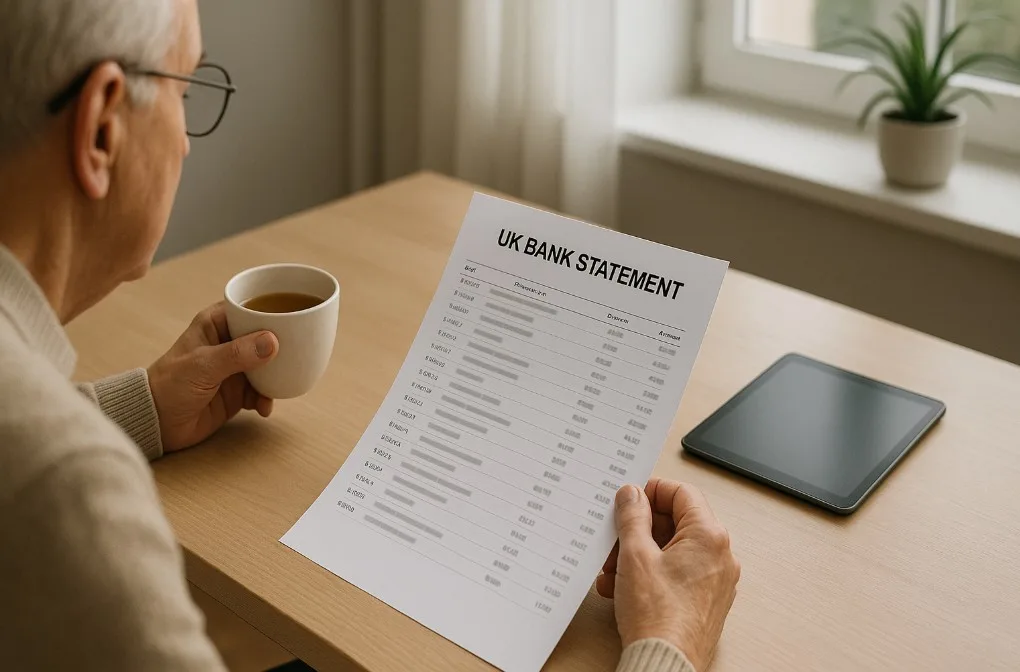Table of Contents
ToggleHave You Seen ‘DWP SP’ on Your Bank Statement and Wondered What It Means? Bank statements are filled with abbreviations and short codes that often leave people puzzled. One such term that frequently raises questions is ‘DWP SP’. If you’ve spotted this reference on your transaction history and are unsure what it relates to, you’re not alone.
So, what exactly does DWP SP mean? In short, it stands for a payment from the Department for Work and Pensions (DWP) relating to the State Pension (SP). It is one of several common abbreviations used by the DWP when issuing financial support or benefits directly into UK bank accounts.
But why does it appear? Who is it meant for? And what should you do if the payment isn’t something you were expecting? This guide will provide clear answers and explain everything you need to know about DWP SP entries on your bank statement.
What Is the Department for Work and Pensions (DWP) and What Does It Do?

The Department for Work and Pensions (DWP) is the UK government body responsible for welfare, pensions, and various forms of financial support. It manages payments for millions of people across the country, from working-age benefits to pensions and disability allowances.
One of the most significant and widely distributed payments the DWP issues is the State Pension. This is a regular payment made to individuals who have reached the State Pension age and have accumulated a sufficient number of qualifying National Insurance contributions during their working lives.
When these payments are issued, they often appear in banking apps or printed statements under the label ‘DWP SP’, indicating the source and type of payment.
What Exactly Does ‘DWP SP’ Mean?
The term ‘DWP SP’ is an abbreviation:
- DWP refers to the Department for Work and Pensions
- SP refers to the State Pension
Together, DWP SP signifies that the payment is your State Pension, issued by the DWP.
This reference can be found in both online and printed bank statements. It is commonly seen every four weeks if you are receiving your State Pension regularly. The amount and frequency will depend on your pension entitlement, which is based on your National Insurance record.
Who Is Eligible to Receive a DWP SP Payment?
You will typically see a DWP SP payment in your bank account if you:
- Have reached the State Pension age, which is currently 66 for most people in the UK (but subject to future increases)
- Have paid or been credited with at least 10 qualifying years of National Insurance contributions
- Have claimed your State Pension through the government’s pension service or online via GOV.UK
Once you qualify and your claim is processed, the DWP begins issuing your payments directly to your nominated bank account, marked clearly as DWP SP.
For example, someone who recently retired at the age of 66 and has a full National Insurance record may receive a payment of £221.20 every week under the new State Pension scheme. This payment will appear on their bank statement as DWP SP.
Are There Other Abbreviations Like ‘DWP SP’ on Bank Statements?

Yes, DWP SP is just one of many abbreviations used by the DWP to represent different types of benefit payments. These codes are intended for internal and banking use, but they often confuse the general public.
Here is a helpful table outlining some of the most commonly used abbreviations:
| Code on Bank Statement | Meaning | Benefit Type |
| DWP SP | State Pension | Pension for individuals over retirement age |
| DWP AA | Attendance Allowance | Support for older people with care needs |
| DWP PIP | Personal Independence Payment | Disability benefit for working-age adults |
| DWP UC | Universal Credit | Income support for low-income households |
| DWP JSA | Jobseeker’s Allowance | Support for those seeking employment |
| DWP ESA | Employment and Support Allowance | For those unable to work due to illness |
| DWP CA | Carer’s Allowance | For people providing unpaid care |
If you receive multiple types of government assistance, your statement may show several entries from the DWP, each with its own distinct abbreviation.
Why Might You See DWP SP If You Haven’t Applied for the State Pension?
Occasionally, a DWP SP payment may appear unexpectedly, which can be concerning. There are a few reasons why this might happen:
- A relative or spouse’s State Pension has been paid into your joint or previously shared account
- An administrative error may have directed someone else’s payment to your bank
- You are entitled to a backdated payment if you delayed claiming your State Pension
- A family member may have passed away, and the DWP issued a final pension payment
In such situations, it’s important not to make assumptions. The best course of action is to verify the payment through the correct channels.
What Should You Do If You Don’t Recognise the DWP SP Payment?
If you’re uncertain about the origin or purpose of a DWP SP payment, it’s important to act responsibly. The following steps can help you resolve the issue:
- Check your age and entitlement: You may have become eligible recently or forgotten you made a claim.
- Look through recent correspondence from the DWP or HMRC: There may have been a notification of an upcoming payment.
- Ask family members if they are aware of any changes, especially if you share accounts.
- Contact the DWP directly to clarify the nature of the payment.
You can reach the Pension Service using the contact details on the official GOV.UK website. Always ensure you’re using the official site to avoid scams or phishing attempts.
Can a DWP SP Payment Ever Be Fraudulent or Sent in Error?

While rare, errors in benefit payments do occur. There have been cases where individuals received payments they were not entitled to due to incorrect account details or data mismatches. In other cases, scammers may use fake DWP references to trick people into sharing personal information.
If you believe a DWP SP payment is not intended for you, or you suspect fraud, you should:
- Not spend or move the money until you’ve confirmed it’s rightfully yours
- Report the payment to the DWP and explain your concerns
- Consult your bank’s fraud prevention department, especially if the payment seems unusual in amount or origin
The DWP takes overpayments and fraud seriously. If a mistake has been made, they will request the funds be returned and may conduct a further investigation.
How Can You Verify the Source and Amount of a DWP SP Payment?
To ensure that a DWP SP transaction is legitimate and accurate, you can take the following steps:
- Log into your personal tax account via the Government Gateway to view pension entitlements
- Contact the Pension Service with your National Insurance number to discuss your payments
- Review your State Pension forecast, which details how much you should receive based on your contributions
If the amount or frequency does not match what you were expecting, it could indicate a miscalculation or a change in eligibility, such as deferring your pension or reaching a specific milestone age.
Why Is It Important to Understand Bank Statement Codes Like DWP SP?
Understanding how payments are labelled on your bank statement helps you manage your finances more effectively. It allows you to distinguish between regular income and irregular or unexpected deposits. This is especially crucial for individuals who:
- Receive multiple forms of support from the DWP
- Are managing finances on behalf of elderly relatives
- Need to account for taxable income during self-assessment
Misunderstanding a payment could lead to overspending, missed entitlements, or even legal complications if a payment is used mistakenly.
By taking a few moments to recognise what each code means, you can stay in full control of your financial records.
Where Can You Learn More About State Pension and DWP Payments?
The most accurate and up-to-date information about DWP SP and other government benefits can be found on the GOV.UK website. There, you’ll be able to:
- Check your State Pension age and forecast
- Update your bank details or contact information
- Report incorrect payments or suspected fraud
- Make a new claim or track an existing application
For personalised advice, you may also consider speaking to:
- A citizens advice advisor
- Your local Jobcentre Plus
- An independent financial advisor with experience in pensions
Frequently Asked Questions
Is DWP SP paid weekly or monthly?
It is usually paid every four weeks, although some people may receive it weekly if they meet certain conditions.
Can I change where my DWP SP payment goes?
Yes, you can update your nominated bank account details through the Pension Service or your Government Gateway account.
What happens if I receive a DWP SP payment in error?
You should report it immediately to the DWP and avoid spending the money until they confirm it belongs to you.
Is the State Pension taxable?
Yes, your State Pension counts towards your total taxable income, though tax is not deducted at source.
What does DWP AA mean next to DWP SP?
DWP AA stands for Attendance Allowance, a benefit paid to those over State Pension age who need help due to illness or disability.
Can I receive both State Pension and other benefits at the same time?
Yes, it’s common to receive State Pension alongside PIP, Attendance Allowance, or Carer’s Allowance, depending on your eligibility.
How do I forecast my future DWP SP payments?
You can use the State Pension forecast tool on GOV.UK to check your expected payment amount and age of entitlement.




